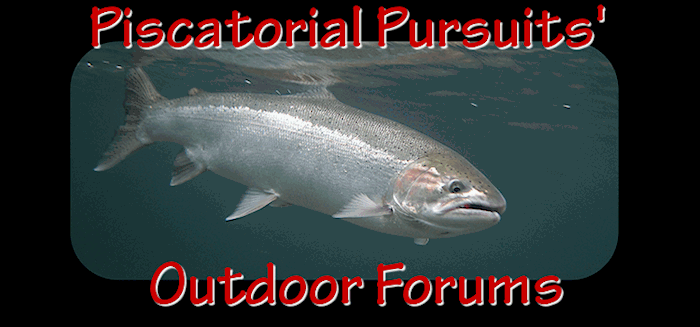King Marine,
Congratulations to you and Cut of the Jib!
There are both wild steelhead (natural production) and native steelhead (mostly hatchery and some natural production) in the Cowlitz River. Let me add to what Cowlitzfisherman said. Some of the hatchery summer and winter steelhead escape the fishery and spawn naturally in the river. Some small number of wild fish subsequently return from this production.
Additionally, some of the early returning hatchery fish to the barrier dam hatchery are transported to the Tilton River, above Mayfield Dam. Those fish not caught in the sport fishery spawn naturally in that river, and some natural - wild - smolts result from that production and are counted through the Mayfield Dam smolt counting house each spring. So some wild steelhead caught in the lower Cowlitz are from this natural production.
And there is an additional possibility. Steelhead fry from late season returning hatchery winter runs, that WDFW has determined as most likely from "native" Cowlitz stock, are stocked in the upper Cowlitz River and tributaries each summer or fall. These "hatchery-native" fry rear naturally in the upper basin and migrate downriver at about 2 years of age. About half of them are collected at the Cowlitz Falls Dam and are transported to the lower Cowlitz. A few of these fish have been returning the last couple years to the Cowlitz River. Most of them return late in the season because they are from late-timed parents. However, the natural environment exerts its forces on those fish, and their run timing will begin to spread out according to the influences of a natural environment.
We've seen on the Skagit that as the wild run increases in size, there are more and more earlier returning native steelhead. I would expect the same thing to occur on the Cowlitz. However, I would have expected it to occur over a couple generations or more. Nonetheless, I've seen run timing shifts in coho that were transferred from a hatchery to the natural environment in a single generation.
So this is speculation, and I am interested in others' opinions on it. It is possible that a wild Cowlitz steelhead in January, and even late December, could be an early returner from the natural production in the upper Cowlitz River basin. The net result is that if that unmarked steelhead shows up in the barrier dam fish trap, it will be transported to the upper river basin to spawn naturally and help develop a restored run of naturally spawning, naturally rearing, native Cowlitz River steelhead. Therefore, congratulations on your friend's catch, and double congratulations for releasing it. That fish can do double duty, having contributed to your recreation, and now it has a chance to contribute to recovering and restoring a wild steelhead run in the Cowlitz River basin.
Sincerely,
Salmo g.













 Previous Topic
Previous Topic Index
Index


